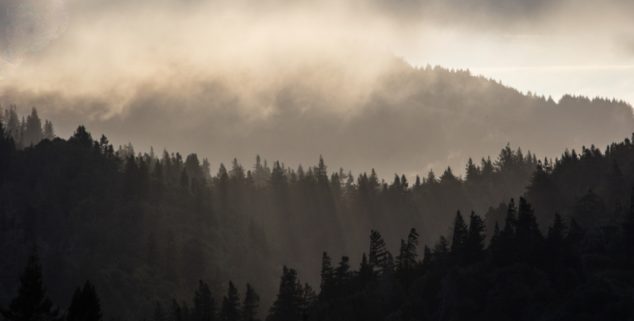Opinion
Fight climate change, preserve nature in one stroke
 The forest and fog of Humboldt County. (Photo: Ethan Daniels, via Shutterstock)
The forest and fog of Humboldt County. (Photo: Ethan Daniels, via Shutterstock)Recently, Gov. Gavin Newsom announced a first-in-the-nation pledge to protect 30% of the state’s land and water by 2030. This historic executive order will require significant conservation action from our leaders. Thankfully, numerous members of Congress are currently working to pass legislation to protect critical public lands and waters across the state which would help California meet our new “30×30” target. This legislation would in one stroke help safeguard biodiversity, contain wildfires, protect Californians, and sink carbon.
The Protecting America’s Wilderness Act (H.R. 2546) would protect and restore over one million acres of public lands and well over 500 miles of rivers throughout the state, including in Northwest California’s wild lands and along the Central Coast.
Every scenario from the Intergovernmental Panel on Climate Change cites reforestation as a key solution.
With firestorms continuing to devastate the state, it’s clear that California’s forests need our attention and protection. California has seen over 7,600 fires thus far in 2020. Within the state, fire has consumed over 3.6 million acres – making 2020 the most destructive on record – and we still have another three months to go.
The numbers are astounding. There are 163 million dead and dying trees in California forests. These dead trees were mainly the result of climate change. Stressed by extreme drought and record high temperatures, trees were made vulnerable to pests, including the deadly dendroctonus ponderosae, the mountain pine beetle. The recent record high temperatures in California turned small fires into large fires, and large fires into record-breaking mammoth wildfires.
California’s forests are essential to the resilience of everybody in the state. Forests clear our air from pollution, capture and filter the water before it arrives in our sinks, prevent flooding, and supply recreational opportunities ranging from water-skiing to contemplative hikes. You can’t have healthy and secure communities without first having healthy forests.
The forest lands identified for protection in this conservation bill can help us in the fight against climate change–notably because plants and trees remove carbon-dioxide via photosynthesis, and store the carbon in plant tissue and soil. Well-managed forests sequester more carbon than poorly managed ones.
Every scenario from the Intergovernmental Panel on Climate Change cites reforestation as a key solution. As the climate shifts so too do plant species. Studies have found that smaller species and invasive species hold less carbon and have replaced larger native species. The legislation directs forest management to promote native species, which will be able to capture more carbon from our atmosphere.
Of course, the key first step to improving forest management is to bring focus and greater public attention to the forests themselves.
California’s nature is special. Our state is a global hot spot for conservation because of its remarkable diversity of plants and wildlife. We have the highest number of native plant species of any U.S. state, many of which are only found here in California. We also face significant threats to habitat loss, which impact wildlife species unique to California. The new designations included in the bill will allow for refugia to take place, for native species to persevere even when they flee to a higher latitude and elevation. Studies have found that the existing protected areas are not adequate to protect the state’s vulnerable biodiversity. Simply, we need more protected land to help California species endure.
The new protective designations will help Californians become more resilient too. When it’s hot in Los Angeles, hundreds of thousands of Angelenos head for the San Gabriel Mountains to find shade in its verdant canyons or to dive into its rivers. The proposed protections would forever preserve public access to these canyons and rivers.
The legislation may also keep fossil fuel in the ground, providing another climate benefit. Newly-proposed protected areas in San Luis Obispo County and Santa Barbara counties would be safe from new oil drilling.
Of course, the key first step to improving forest management is to bring focus and greater public attention to the forests themselves. The proposed legislative package will bring new resources to better manage these vulnerable yet critical places in California. With climate and public lands champions Rep. Salud Carbajal, Rep. Judy Chu, Rep Jared Huffman, and Rep. Adam Schiff leading the way, we have an unparalleled opportunity to make climate and conservation progress when it is needed more than ever.
Taken in tandem with the Newsom Administration’s 30×30 announcement, this conservation legislation underscores California’s climate leadership at the state and federal level. Congress should heed California’s example and protect these places without delay.
—
Editor’s Note: Jonathan Parfrey is the Executive Director of Climate Resolve in Los Angeles.
Want to see more stories like this? Sign up for The Roundup, the free daily newsletter about California politics from the editors of Capitol Weekly. Stay up to date on the news you need to know.
Sign up below, then look for a confirmation email in your inbox.

Leave a Reply